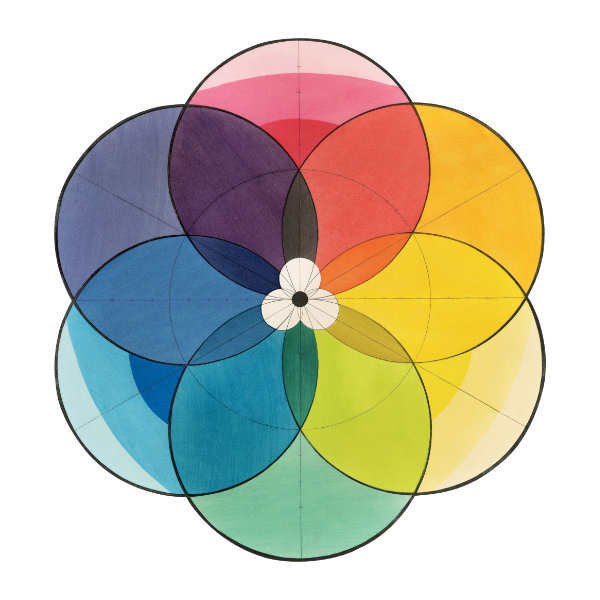Color contrast, especially when it comes to text, is more important than you realize. Your content might be brilliant, but if people can’t read it comfortably, they’ll leave before discovering how amazing you are.
Imagine someone finding your website through a Google search, excited to learn more about your services. They land on your homepage, try to read your compelling copy, but find themselves squinting at light gray text on a white background. After 30 seconds of eye strain, they give up and click away. They leave, not because they weren’t interested, but because reading your content felt like work.
This scenario happens thousands of times every day on websites with poor color contrast. Entrepreneurs spend hours crafting the perfect message, only to present it in color combinations that make reading difficult or impossible for many visitors.
The irony? The fix is usually simple, but the impact is enormous. When your text is easy to read, people stay longer, read more, and are more likely to take action. When it’s not, you lose them before they even know what you offer.
Why Readable Color Contrast Combinations Matter More Than Ever
In our fast-paced digital world, people have zero patience for websites that make them work harder than necessary. Here’s what poor color contrast is actually costing you.
Immediate Bounce Rates
Bounce rate is the rate at which people leave your site without taking another step. Obviously, we don’t want that.
Immediate bounce rate is worse. It means people leave very quickly after arriving. We really don’t want that.
When text is hard to read, people leave within seconds. You don’t even get a chance to make your case. What’s worse is a high bounce rate signals to Google that you have a poor quality site, so Google and other search engines share your site less with those searching for what you have.
Accessibility Issues
A few years ago, courts in the USA ruled that the Americans With Disabilities act applies to websites too.
Nearly 1 in 4 adults has some form of vision difficulty. Poor contrast is an inconvenience to most people, but for those with visual impairments, poor contrast on your website leaves them out entirely, and violates the standards for accessible website design.
Thankfully this one is an easy fix.
Mobile Reading Challenges
People aren’t just reading your website content on a large screen indoors. They are likely to be reading outside on a mobile device too. Text that’s borderline readable on your computer monitor becomes impossible to read on a phone screen in bright sunlight.
Professional Credibility
Hard-to-read text suggests you don’t pay attention to user experience. This can be a red flag for potential clients evaluating your professionalism.
SEO Penalties
Search engines consider user experience signals, including how long people stay on your site. If they leave immediately because they can’t read your content, it hurts your rankings.
Google and other search engines also look at the accessibility standards on your website as well, so they know they are sending their customers (those searching on their search engines) to high quality websites that will meet their needs. If you don’t have the most basic accessibility issues correct, you might lose out on potential website visibility.
Lost Conversions
Even if people stick around despite poor readability, eye strain puts them in a negative mood. If they are straining to understand what you have on your web pages, they’ll not exactly be in the mindset for making purchasing decisions.
In my opinion, this would be a silly reason to lose out on sales.
What “Good Color Contrast” Actually Means
Color contrast isn’t just about dark text on light backgrounds (though that’s usually safest). It’s about the difference in lightness between your text color and background color, measured by something called a “contrast ratio.”
Here’s what the numbers mean:
- 4.5:1 or higher: Good contrast for normal text
- 3:1 or higher: Acceptable for large text (18pt+ or 14pt+ bold)
- 7:1 or higher: Enhanced contrast that’s easier for everyone to read
You don’t need to memorize these numbers, but you do need to test your color combinations to ensure they meet these standards.
The Most Common Readability Mistakes I See
After reviewing hundreds of websites, these contrast problems appear again and again.
The “Sophisticated Gray” Problem
Using light gray text because it looks more “elegant” than black might sound like a great idea, but it’s really hard for most people to read for too long. What looks sophisticated on your high-resolution monitor becomes unreadable on various devices and lighting conditions.
Use dark gray (#333333) instead of light gray for body text, if you absolutely need to use gray. I’d also recommend using a larger font size if you’re using gray.
The “Brand Color Everything” Approach
I love unified branding. Using brand colors for all text is not always wise, especially when they don’t provide good contrast. Your beautiful teal might be perfect for buttons but terrible for paragraph text.
Reserve brand colors for headings and accents; use high-contrast colors for body text.
The “Reverse Text” Trap
White or light text on colored backgrounds can often be difficult to read, so you should always check the contrast before doing so. Colors that look vibrant might not be dark enough to support light text, especially when someone who has a visual impairment are trying to read the text.
Test every combination and darken background colors as needed.
The “Overlay Nightmare”
Placing text directly over images without ensuring readability can also be problematic. Image backgrounds are unpredictable and often reduce text contrast. If you’re going to do this, first take images that have some empty space roughly where the text will go.
Adding semi-transparent overlays or backgrounds behind text on images will also help with readability and provide better color contrast.
The “Tiny Text” Excuse
Using poor contrast and claiming it’s fine because the text is “just fine print” is a huge problem. All text should be readable, regardless of its purpose. The smaller the text, the better the contrast should be.
If text is important enough to include, make it readable with better color contrast.
Quick Fixes for Better Color Contrast and Readability
You don’t need to redesign your entire website to improve readability. Here are high-impact changes you can make immediately:
Darken Your Body Text
If you’re using light gray (#999999 or lighter), switch to dark gray (#333333) or black (#000000) for body text. If your body text is not on a white background, make sure to check your color contrast with an online color contrast checker like the one from WebAIM.
Lighten Your Backgrounds
Pure white (#FFFFFF) provides the best contrast for dark text. Off-white (#F8F8F8) is also excellent and feels slightly softer. If you’re using something other than black or dark gray for text, be sure to run a contrast check for when using off-white.
Add Background Overlays
For text over images, add a semi-transparent black or white overlay (50-80% opacity) behind the text to improve color contrast. Also try to choose images that have emptier spaces on the side where you plan to add text. Be strategic with your website photos.
Increase Font Weight
Sometimes bold text is more readable than regular weight, especially for headings over images. Choose readable fonts, with a good font weight, and an easily readable size (which will vary by your font), to improve the color contrast and readability for your text.
Test Your Links
Make sure your link colors provide adequate contrast and are easily distinguishable from regular text. Your link text should stand out and be distinct, but still readable.
The Mobile Readability Challenges
Mobile devices present unique readability challenges, including color contrast issues:
- Screen Brightness Varies: Your text needs to be readable in bright sunlight and dim environments.
- Screen Sizes Differ: Text that’s readable on a large phone might be impossible on a smaller one.
- Touch Targets: Links and buttons need enough contrast to be clearly tappable.
- Battery Saver Modes: Many phones automatically adjust screen brightness, potentially reducing contrast.
- Always Test on Real Devices: Simulators don’t accurately represent real-world mobile reading conditions.
My Perspective on Website Accessibility
You might be wondering why exactly, beyond legal issues, should anyone care about accessibility, or you might even find this requirement a nuisance. Well, here’s my view on it. When you make your content accessible to people with different abilities, you’re demonstrating love and consideration for all potential visitors.
It’s about empathy. By putting yourself in the shoes of others, and figuring out what they are trying to accomplish, we as entrepreneurs and website owners can help them hit their goals easier, or at least remove roadblocks like poor color contrast.
Better user experience starts here, with your target audience, and figuring out how to make it easier for them to do what they need to do on your website.
I believe there also needs to be some inclusivity. We must take into account not everyone is looking at this website on the same size device, the same age device, or with the same technical skills. Does it still make sense? Is it still easy to read? Can people of all skills on all devices find what they are looking for?
Not only that, but not everyone looking at your website has the same health or physical limitations. You’d do well to make sure everyone of all abilities can access your content, starting with good color combinations for the text, for example.
Maybe this is over spiritualizing or overthinking things, but in my mind, I see a website that is easy to navigate, offers accessible content formats, and accommodates various needs as a digital embodiment of this virtue. For me, accessibility and faith go hand in hand.
This isn’t just about following rules – it’s about removing barriers between people and the help, encouragement, or services you provide. Your message matters, and it deserves to be presented in a way that anyone can access and benefit from.
The Bottom Line
Readable color combinations aren’t just a technical requirement. Those easier-to-read color contrast choices are a fundamental aspect of good communication. When your text is easy to read, people can focus on your message instead of struggling to decipher it.
The goal isn’t to have the most artistic color scheme. I love artsy beautiful design too. But design needs to function.
Artists make art; Designers solve problems.
One problem we’re solving is to ensure that everyone who visits your website can easily access the valuable content you’ve created.
Remember, if people can’t read your content comfortably, it doesn’t matter how brilliant your message is. But when your text is clear and easy to read, you remove one more barrier between your ideal clients and the help you provide.
That’s not just good design, it’s good service.

